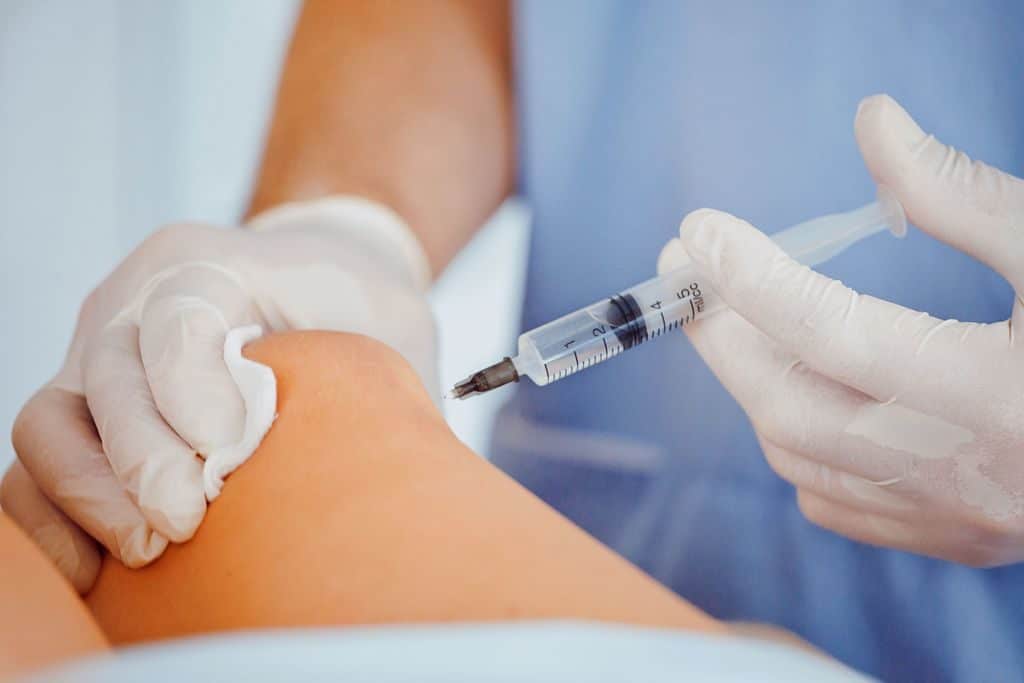Contents
Prednisolone in rheumatoid arthritis:
- stops the inflammatory process;
- Has antihistamine activity;
- Suppresses immune activity;
- It has an antishock and antitoxic effect.
The main active ingredient – Is the corticosteroid prednisolone sodium phosphate. The drug is available in tablets and ampoules and is intended for systemic use. Each tablet contains 5 mg of the active ingredient, along with lactose, starch, and magnesium stearate.
Each vial of the drug contains 30 mg of prednisolone and a number of excipients, including ethanol. The drug has a large list of indications and is used for almost any complicated inflammatory disease of the skin and joints. Reception of Prednisolone in rheumatoid arthritis should be coordinated with the attending physician, since the drug is not safe.
Indications for use
The list of indications of the drug is very large and includes more than 15 different diseases and conditions. Prednisolone in tablets is prescribed as part of the complex therapy of the following diseases:
- rheumatic disorders;
- Chronic pathologies affecting the connective tissue (lupus, scleroderma);
- multiple sclerosis;
- Acute pathologies of the joints;
- Chronic inflammation of the joints;
- adrenal insufficiency;
- hepatitis;
- hypoglycemia;
- Autoimmune disorders affecting the epidermis;
- diseases of the hematopoietic system.
Prednisolone can be used to treat rheumatoid arthritis in any form of the drug. Tablets are designed for oral administration and have a simple route of administration and clear dosages. Treatment with this form of the drug is easy to carry out at home. The drug in ampoules is intended for injection only. Indications:
- systemic lupus erythematosus;
- scleroderma;
- Bechterew’s disease;
- anemia;
- leukemia;
- psoriasis;
- alopecia;
- inflammatory dermatological diseases;
- inflammatory pathologies of the joints;
- acute insufficiency of the adrenal cortex;
- Crohn’s disease.
The injections are given either intravenously or intramuscularly. In the therapy of rheumatoid arthritis, it is proposed to treat exacerbation of this disease with prednisolone, with treatment by injecting the drug directly into the joint capsule.

In acute arthritis, an injection is made directly into the joint
When to take in arthritis?
Rheumatoid arthritis is characterized by periodic exacerbations, during which there is swelling of the joints, which is accompanied by severe pain and marked impaired mobility of the affected area.
When and how to take Prednisolone in rheumatoid arthritis – Only a rheumatologist can answer this question. This drug refers to a potent synthetic hormonal drugs, which causes a large number of side effects and contraindications to the use of the drug.
Properties of Prednisolone in rheumatoid arthritis:
- quickly relieves swelling of the joint capsule;
- Has an immunosuppressive effect, suspending the autoimmune process;
- stops the inflammation;
- relieves pain syndrome;
- Stimulates elimination of toxins.
The drug in tablets has a lower bioavailability, so it is effective for moderately severe arthritis symptoms. It is taken in a short course to quickly reduce the inflammatory reaction and improve overall health.
Treatment with glucocorticosteroid shots – one of the most effective ways to quickly stop the inflammatory process. Therapy with such drugs rarely takes more than three days. During this time, it is possible to get rid of severe symptoms and relieve the swelling of the joints, returning them to their former mobility.
Thus, Prednisolone is effective in quickly relieving the symptoms of rheumatoid arthritis.
Most often, therapy with Prednisolone is carried out in a hospital, under the constant supervision of medical professionals. Such a measure is associated with high risks of developing complications against the background of treatment with this drug.
Prednisolone action in arthritis
Rheumatoid arthritis refers to autoimmune diseases. This pathology develops because of a specific immune response to human connective tissue cells, which results in the development of inflammation in the small joints. Since the exact causes of the development of this disease have not yet been identified, the treatment is carried out with means that quickly relieve symptoms, while inhibiting the activity of immune cells.
The main purpose of taking Prednisolone for rheumatoid arthritis – It is an immunosuppressive medication with a simultaneous anti-inflammatory effect. Thus, the glucocorticosteroid simultaneously reduces the activity of the mechanisms that cause inflammation, and kills this inflammatory reaction, reducing discomfort.
Despite this profound effect, Prednisolone does not cure arthritis, but only temporarily relieves it. Some time after taking the drug, its activity decreases, the immune system continues to work in the same mode, and the autoimmune attack on the joints resumes.
Prednisolone relieves unpleasant symptoms, but does not fight the disease
Patterns of use and dosage
The dosage of Prednisolone for arthritis is selected individually for each patient. The amount of the drug taken depends on the patient’s weight, general health and the intensity of the inflammatory reaction.
Standard dosage for an adult patient when taking tablets – 20 mg per day. In severe cases, the amount may be increased to 30 mg. The daily dosage is divided into two doses – Take 2/3 of the dose in the morning and the remaining amount in the evening. This is due to the peculiarities of drug metabolism in the human body.
In private cases, the dosage may be reduced or increased, but only by doctor’s prescription. It is forbidden to independently adjust the scheme of therapy.
The maximum allowable dosage of the drug in ampoules – 30 mg per day for large joints and 10 mg for small joints. In rheumatoid arthritis, the shot is given directly into the inflamed joint. It is not possible to do this on your own, so the treatment is done in a hospital. Injections are given twice a week, not more often. Maximum duration of treatment – 3 weeks. In the vast majority of cases, three injections are enough to reduce the acute phase of the disease.
Contraindications
The list of contraindications to Prednisolone is quite long. It is necessary to get acquainted with them before starting treatment. Absolute contraindications:
- Intolerance to the active substance;
- Infectious diseases;
- viruses, fungi, parasites in the body;
- gastric ulcer;
- Recent heart attack;
- diabetes mellitus;
- renal and hepatic insufficiency;
- glaucoma;
- immunodeficiency in the background of HIV.
The drug should not be taken for several weeks after vaccination. With gastritis in the acute stage, it is necessary to refuse to use this drug, as it can aggravate the symptoms.
For a complete list of contraindications, precautions, and drug interactions, see the official instructions for the drug. This information should be read before you start treatment. The patient must warn the physician about any medications he or she is taking on a regular basis. This is to avoid dangerous drug interactions.

In the presence of fungal and infectious diseases, the drug is not prescribed
Side effects
When treating rheumatoid arthritis with the drug in the dosage form of tablets or ampoules, note that Prednisolone causes severe side effects. In this regard, it is recommended that therapy should be carried out under the supervision of the attending physician.
The most common body reactions to Prednisolone:
- development of superinfection when taken against a background of bacterial, viral or fungal diseases;
- elevated blood sugar levels;
- disruption of the menstrual cycle;
- A decrease in the concentration of sex hormones;
- Psychiatric disorders, including delirium;
- paresthesias;
- migraine and vertigo;
- seizures;
- Blood pressure spikes;
- Heart rate abnormalities.
Metabolic disorders and weight gain may occur during long-term therapy with the drug. The drug can cause menstrual disorders in women and erectile dysfunction in men.
The drug is fraught with the risk of developing severe allergic reactions. When taking Prednisolone, anaphylactic shock, Quincke’s edema have been noted.
When taking the drug in tablets, digestive disorders accompanied by vomiting, diarrhea, impaired acidity of gastric juices are often noted, and therefore the drug is undesirable for patients with chronic gastrointestinal diseases.
